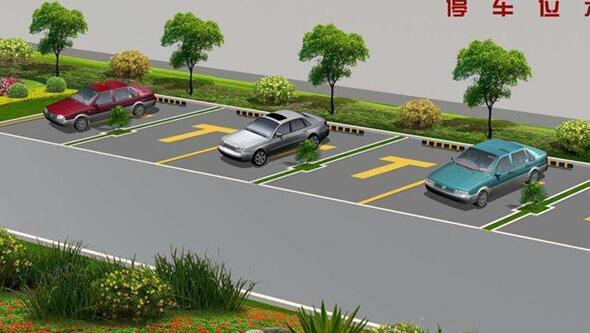Eight sets of solutions for seven social values of smart parking
来源:
作者:

Cities are getting bigger and bigger, there are more and more vehicles, and traffic is getting more and more congested. "Difficult parking" is also gloriously added to the series of people’s daily travel difficulties, such as difficulty in driving and driving. Especially in some large and medium-sized cities, the shortage of parking spaces is particularly prominent, and disputes caused by parking problems such as random parking, misplacement, occupation of roads, and road grabbing are common. Not only does it bring inconvenience to the lives of the people, but also has a serious impact on the city's appearance and traffic efficiency. "Difficult parking" has become a "growth trouble" in most cities in my country. The rapid increase in the number of motor vehicles in recent years must be one of the reasons for aggravating the "difficulty of parking", but the lag in the construction of urban public parking lots and the unreasonable allocation of parking resources are the main reasons for the shortage of parking spaces.
Recently, CBNData and ETCP jointly released the "2017 China Smart Parking Industry Big Data Report" (hereinafter referred to as the CBNData "Report", click to read the full text for the full report), based on ETCP big data, select 2016 From September to August 2017, Beijing, Shanghai, Guangzhou, Shenzhen, Chongqing, Suzhou, Chengdu, Wuhan, Xi’an, and Changsha, where ETCP has been stationed, are the key cities for analysis, providing insights into the optimization of smart parking for the national parking experience and the improvement The assisting role of urban public facilities services.
CBNData's "Report" shows that 30% of congestion problems are caused by parking difficulties. Daily 48% of vehicles have to line up at the parking lot. The queues in hospitals are particularly serious; the parking space utilization rate in more than 90% of the cities is less than 50%. When the utilization rate of smart parking spaces increases to 80%, the supply of parking spaces in 2019 will exceed the demand for parking spaces; in view of this, the CBNData "Report" points out the seven social values of smart parking and provides eight solutions for different travel scenarios. The plan looks forward to the market development trend of smart parking.
1. The 7 social values of smart parking to effectively increase the utilization rate of parking spaces is a core value
The increasingly prominent supply-demand contradiction between the number of motor vehicles and the supply of parking spaces is only a superficial phenomenon, behind which exposed the problems of low specialization and small chaos in traditional parking lot management. In addition, the low utilization rate of parking spaces has caused serious problems. The phenomenon of waste of parking space resources has caused the gap of parking spaces in cities to become larger and larger.
According to the CBNData "Report", more than 90% of the cities in the country have a parking space utilization rate of less than 50%, and the parking space utilization rate in major cities such as Beijing, Shanghai and Guangzhou is between 40%-50%. Generally speaking, the coverage of smart parking lots is low. There is a lot of room for improvement. In this regard, the CBNData "Report" gives the seven social values that smart parking can produce to public life:
Improve the difficulty of parking. Smart parking realizes vehicle drainage by opening up parking information and effectively increases the utilization rate of parking spaces. This is where the core value of smart parking lies. In Chongqing, Shanghai and other places, if the utilization rate of smart parking spaces in the two cities is increased to 80%, even simply increasing the utilization rate of parking spaces can meet all the parking demand in 2019.
缓解城市交通拥堵。智慧停车通过停车位引导、反向寻车诱导等手段减少找车与徘徊时间、加快停车与找车速度,从而节约大量社会时间成本,帮助城市缓解交通拥堵问题。
提升城市公共安全。智慧停车可以通过公共安全视频监控联网,辅助公安部门识别套牌车、侦破嫌疑案件。以ETCP为例,目前在北京、深圳和上海等十大重点城市对进出ETCP停车场的车辆已经实现100%的车牌覆盖。
促进现代服务业。帮助城市级合作伙伴构建智慧停车生态圈,打通停车产业上下游,并提供共享单车、充电桩、电子发票、生活服务以及其他新兴服务,促进城市现代服务业发展。
帮助智慧城市规划。智慧停车行业可以利用城市静态停车数据实现对老旧停车场进行改造与信息化升级、辅助城市停车场规划建设、道路规划建设以及市政规划建设。
完善信用体系建设。智慧停车可以通过车主画像、停车轨迹、支付行为和LBS数据帮助政府建立停车场征信体系,并将车场征信纳入国家整体信用体系,有效缓解停车逃费和乱停车现象。
减少污染排放。汽车尾气排放是空气污染的主要来源之一。智慧停车可以通过导航指引车辆,减少车辆在停车场外路面的行驶时间,从而起到降低碳排放的作用。
二、五大业态痛点,八套解决方案
不论是购物、通勤、就医、远行,不同的目的地,遇到的停车难问题却不尽相同,要完善各业态服务链条,就要从停车环节开始切入。CBNData《报告》针对商业综合体、商务写字楼、公共设施、交通枢纽和住宅五大核心物业给出了八套智慧停车解决方案。
1、商业综合体——车位利用率方案+会员体系化管理方案
根据CBNData《报告》显示,商业综合体高峰期(11-20点)的车流量远高于其他类物业;
其中峰值18点车流量为各类物业平均车流量的1.9倍,这种集中且大规模的车流量特点给停车场的运营造成较大压力。车位利用率方案配合会员体系化管理方案能有效解决商业综合体的高峰拥堵问题。
车位利用率方案可以利用车位引导/夜间长租等方式优化车位配置,提升日均使用率,增加整体营收。而会员体系化管理方案则通过对接商家优免系统,提升其用户管理数字化水平。
2、商务写字楼——闲时利用方案
对于停车场规模小、进出车辆复杂度高、工作日早晚高峰容易拥堵的商务写字楼而言,停车场电子支付和闲时利用方案是提高通行效率,降低工作日高峰期拥堵,提高车场收入的良策。闲时利用方案利用动态费率及车位信息化、电子支付等措施打造智慧商务写字楼,以北京大兴区某商务写字楼为例,智慧化改造后,节省了一半人力。
3、公共设施:支付优化方案
以医院和公共场馆为代表的公共设施类车场主要以临停车辆为主,交易付费率普遍高于各类车场平均水平,高峰时段占比超过50%,使得原本就停车位资源紧张的公共设施排队情况尤为严重,医院峰值排队车辆占比达到79%,其中成都、苏州公共场馆交易临停率高,苏州、成都、广州医院交易临停占比高。
优化此类停车场的交易环节能够大大提高车场的流通效率、有效缓解压力。支付优化方案利用高精度车牌识别和多途径支付优化支付流程,实现单次电子支付可平均节省5分钟通行时间。
4、交通枢纽:高效临停管理方案+公共交通安全保障方案
以机场、火车站为代表的交通枢纽停车场主要服务于为接送旅客而快速进出停车场的汽车。根据CBNData《报告》显示,车辆平均停留时间为2.1小时,低于平均水平的4.9小时;车位日周转次数为4.4次,高于平均水平的2.2次。
所有城市中广州的交通枢纽最为繁忙,其城市交通枢纽的日均周转次数相比其他城市最高,且车辆停留的时间最短,可见人群流动高、快进快出是这类车场的特点,对运营效率提出了较高要求的交通枢纽需要高效临停管理方案与公共安全保障方案相结合,因此提高车场的车辆快速进出的效率可以有效缓解广州交通枢纽停车运营压力。
高效临停管理方案通过利用车牌识别/电子支付等手段提升通行效率,单车次节省车辆通行时间接近半分钟;公共交通安全保障方案则通过日常管理、专业维保、即时响应、数据云端同步等多种手段助力公共停车系统的稳定,为提高运行效率提供了公共安全的保障。
5、住宅——车位共享方案+长租车位管理方案
根据CBNData《报告》显示,住宅小区停车场内长租车辆占比达43%,长租单次停车时长18小时。急需高效的车位共享方案和系统化的长租车位管理方案合理配置车位资源,大幅提高物业的工作效率。
车位共享方案可以通过车位共享模式将周边白天车位较为紧张的车场类型进行引流,减少社区车场的空置率的同时,还能缓解周边物业的压力。而长租车位管理方案则旨在将长租车位管理转移到线上,助力物业方实现平台统一管理,减少跑冒漏滴的财务风险。对于长租用户而言,在线上进行到期缴费更便捷。
三、智慧停车直接关联出行幸福度
鉴于停车难度主要由城市停车位数量与车辆数的比例以及停车周转率决定,所以停车场基建水平的高低直接决定了一座城市的出行幸福指数以及车主的停车满意度。
北京、深圳停车智慧化程度高
根据ETCP在2017年8月的最新数据计算核心城市的停车难度指数,CBNData《报告》显示,由于北上广深智慧化停车场进程加快,一线城市周转率高、空置率少,所以四大一线城市的停车难度反而更低,其中,北京的智慧停车发展程度最高;相比之下,成都是难停车的城市,与其停车智慧化程度较低有关。
上海外地车牌节假日流动性较强
逃离北上广,春节恰适时。根据CBNData《报告》显示,春节期间上海、广州、深圳、北京等一线城市的外地车牌占比下降,为外地车牌输出型城市,重庆市外地车牌占比在春节期间反而增加,为外地车牌输入型城市;其中以上海的春节期间外地车流出率最高,达9%,相比之下一线城市中春节外地车流出率最低的是深圳,仅为1%。
深圳智慧停车最便宜;武汉、重庆、北京停车电子化支付程度高
CBNData《报告》通过计算核心城市的长租费率和临停费率发现,一线城市的费率总体高于二线城市,广州、上海和北京的长租费率和临停费率都最高。智慧停车最便宜的城市是深圳,长租费率和临停费率在核心城市中都最低。
而从核心城市智慧停车场的电子支付比率来看,呈现了逐渐上升的趋势。在ETCP十大核心城市中,武汉、重庆和北京等地的智慧停车电子支付率水平较高,都在10%以上。此外,从核心城市停车费用减免情况来看,重庆是最精打细算的城市,停车券总体核销率高达51%,远远超过深圳、北京、上海和广州等城市。
四、未·来
停车体验已成为出行幸福度的一大关键指标,智慧停车现在可以根据出行场所的性质为车主用户拟合最优化的出行方案,解决用户出行过程中停车环节造成的难题,大幅提升了出行效率和体验。未来停车费将不再是车场营收的主体,多元化的收入结构将成为主要模式。CBNData《报告》显示,多样化、混合式的出行方案、动态的停车资源配置、自动化的停车模式以及升级的城市交通系统是智慧停车行业未来发展的方向



